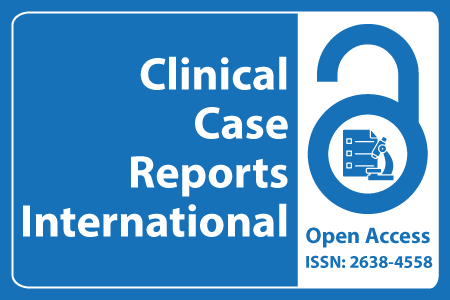
Journal Basic Info
- Impact Factor: 0.285**
- H-Index: 6
- ISSN: 2638-4558
- DOI: 10.25107/2638-4558
Major Scope
- Hematology
- Cardio-Thoracic Surgery
- Molecular Biology
- Sexual Health
- Signs and Symptoms-Clinical Findings
- Pharmacology and Therapeutics
- Trauma
- Diabetology
Abstract
Citation: Clin Case Rep Int. 2023;7(1):1639.DOI: 10.25107/2638-4558.1639
Neoadjuvant Therapy for Dual Breast Cancer (Triple Positive and Triple Negative): A Case Report and Comprehensive Literature Review
Dong WW, Bai JH, Shi JJ, Yang JQ, Chang XF, Shi L, Lin T, Ding RB, Xu GG, Ren F, Hou XD, Huang JB and Cui MS
Department of Breast Surgery, Heping Hospital Affiliated to Changzhi Medical College, China
Discipline of Imaging, Heping Hospital Affiliated to Changzhi Medical College, China
*Correspondance to: Meng-Sheng Cui
PDF Full Text Case Report | Open Access
Abstract:
Background: Bilateral primary breast cancer is a rare occurrence. One breast exhibit triple-positive breast cancer, while the other presents with triple-negative breast cancer. Tailoring treatment based on molecular subtyping can enhance the Pathological Complete (PCR) response rate and improve long-term prognosis. Case Report: The hospital admission of a 56-year-old female patient was prompted by the presence of extensive erythema and edema on the skin of her left breast. Initial diagnostic procedures, including color Doppler ultrasound, mammography, and magnetic resonance imaging, revealed bilateral breast cancer upon admission. Subsequent histopathological examination confirmed triple-negative breast cancer in the left breast and triple-positive breast cancer in the right breast. Biopsy of the left cutaneous tissue and puncture of bilateral axillary lymph nodes demonstrated metastatic carcinoma. After 6 cycles of neoadjuvant therapy, the patient achieved partial remission. Following bilateral modified radical mastectomy, the bilateral postoperative Miller-Payne grade was determined to be grade 3, and subsequent intensive treatment was administered. Conclusion: Bilateral molecular subtypes should be taken into consideration when determining neoadjuvant therapy for bilateral breast cancer. This particular patient necessitated dual anti- HER-2 targeted therapy in conjunction with treatment for triple-negative disease. In such instances, subsequent therapeutic interventions should be intensified to target both the multitarget (endocrine and HER2 gene) in triple-positive breast cancer and the nonresponsive target in triple-negative breast cancer. Consequently, more sophisticated personalized treatment approaches are imperative.
Keywords:
Dual breast cancer; Triple-positive breast cancer; Triple-negative breast cancer; Neoadjuvant Therapy
Cite the Article:
Dong WW, Bai JH, Shi JJ, Yang JQ, Chang XF, Shi L, et al. Neoadjuvant Therapy for Dual Breast Cancer (Triple Positive and Triple Negative): A Case Report and Comprehensive Literature Review. Clin Case Rep Int. 2023; 7: 1639.













